Buchanan's 18 Year: The Ultimate Bottle Guide
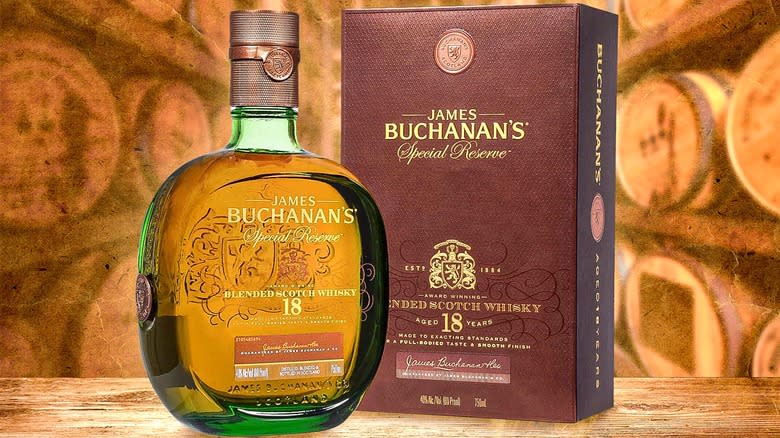
Buchanan's 18-year whisky is the result of an incredible journey that involves one of the most prominent whisky barons. James Buchanan founded the company and sought to create whisky blends that would be more suited to the English palate. This blended scotch has a wonderful velvety texture that has been a welcome addition to Buchanan's long list of successful whisky expressions. The 18-year has a palate that consists of a mix of citrus notes with both sweet flavors of toffee and more earthy, nutty notes.
It has the deep richness that you can expect from an 18-year-old whisky and has become hugely popular in South America, and with Latin Americans in the U.S. Blended whiskies are designed to be the perfect combination of all the whiskies that go into them, and Buchanan's 18-year is a great example of that. For anyone interested in the history of whisky and wishing to sample the delights of maturely aged blended whisky, this 18-year expression hits all the right notes.
Read more: The 25 Best Bourbon Brands, Ranked
Who Was James Buchanan?
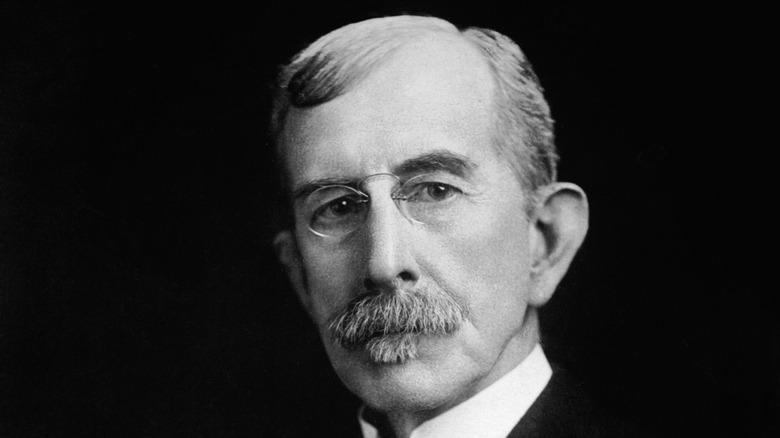
There is no doubt that James Buchanan is a hugely important figure in the history of whisky. Not only did he have a significant impact on the industry in the U.K., but his influence is still felt across the world. Born in Canada in 1849, the whisky pioneer moved to Northern Ireland as a child before the family eventually settled in Glasgow, Scotland. He started his working life as a 14-year-old boy in a Glasgow shipping firm, but by 1879, he was working for whisky blenders Charles Mackinlay & Co. He traveled to London as an agent for the company but realized there was a huge untapped market that he wanted to take advantage of.
Soon he would create his own company: James Buchanan & Co. Ltd. To say his approach was successful is an understatement. Through a careful selection of blends and clever marketing tricks, his whisky began to achieve acclaim in the U.K. before exporting his creations across the world. For his services to the world of whisky and his many charitable projects, he was first knighted in 1920 before being made a baronet and given a peerage in 1922. It was a remarkable rise for a man who started his career as a simple office boy when he was a young teenager.
History Of Buchanan's 18-Year

As with all whisky companies, Buchanan's range has evolved over the years. The first scotch it created was simply called The Buchanan Blend, which saw almost immediate success. Over time this was renamed to Buchanan's Special Red Seal but due to difficulties in trademarking the name, production was stopped in 1922. However, in recent years the company brought back this bottle, which is now proudly part of the lineup with its homage to the past.
After production on the old Red Seal brand initially stopped, Buchanan's most commonly produced expressions were the infamous Black & White whisky, along with 15 and 25-year-old liqueurs. It was these two liqueurs that were eventually replaced by the two age statement whiskies it makes today with the 12-year DeLuxe created in 1925 and Buchanan's 18-year created in 1992. Along with these whiskies, the current lineup today includes blends like Buchanan's Master and Buchanan's Pineapple.
Sadly, James Buchanan struggled with ill health for much of his life and in 1925 took a step back from the company when it was sold to Distillers Company Limited (DCL) in 1925. After a few mergers, DCL would eventually evolve into the huge multinational company Diageo, which still owns the brand today. Despite the change in ownership, the company still has a strong commitment to not only making beautifully blended whisky but also carrying on Buchanan's legacy.
Royal And Government Approval

These days Buchanan's whisky is far better known in the Americas, but there was a time when it was hugely influential in the U.K. The Buchanan Blend was the company's first product and John Buchanan was successful in having it sold in the House of Commons. It became so popular with Members of Parliament that it soon became colloquially known as the House of Commons whisky. Buchanan aimed to exploit this popularity and created a new blend, simply called "House of Commons," which was sold in a black bottle with a white label.
In a strange quirk, this whisky also got a nickname. This was due to its unique coloring and the company once again changed the name to fit its new moniker and in 1902, the blend was officially changed to Black & White. Buchanan's has since stopped selling this whisky directly, but it's still available through their parent company Diageo, and is a hugely popular blend.
Not content with just having influence in the British government, Buchanan also won a Royal Warrant from both Queen Victoria and the Prince of Wales to supply his whisky to the Royal Household. As he had done with his House of Commons whisky, Buchanan capitalized on this warrant and created a Royal Household blend which was made exclusively for consumption within the Royal Households of the United Kingdom. Later this whisky was sold in limited release for the Japanese market in the 1980s and is extremely rare today.
An International Reputation
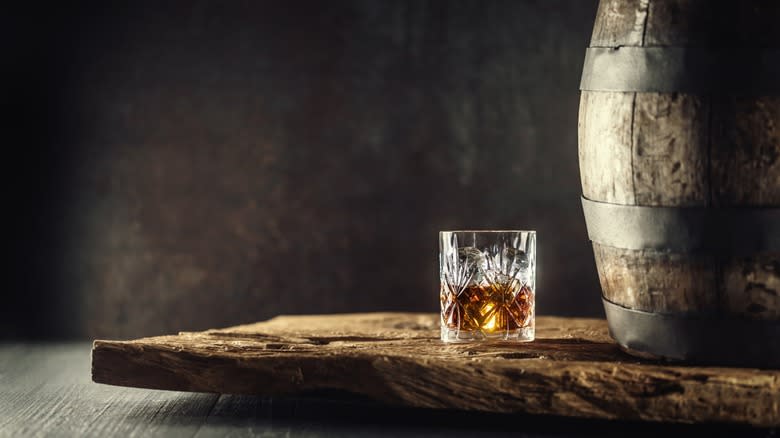
Over the 20th century, Buchanan's influence and popularity in the U.K. drastically reduced. This is due to the huge rise in popularity of single malts as opposed to blended whiskies. As Buchanan's popularity grew abroad, Diageo put more focus on targeting these markets, which has led to it becoming the most popular premium scotch in Latin America.
The reason Buchanan had a foothold in Latin America in the first place was due to James Buchanan's keen business mind. All the way back in 1895, he created an export department and personally oversaw tours to Europe, the U.S.A., Canada, and South America. He was an expert at tapping into markets with high potential and his gamble paid off handsomely. It has curiously led to a whisky that was once favored by the British elite and is now the favorite scotch of Mexico's most notorious criminals. One of the most rewarding aspects of whisky is getting to enjoy its rich history, and none have a better story than Buchanan's.
How Is Buchanan's 18-Year Made?
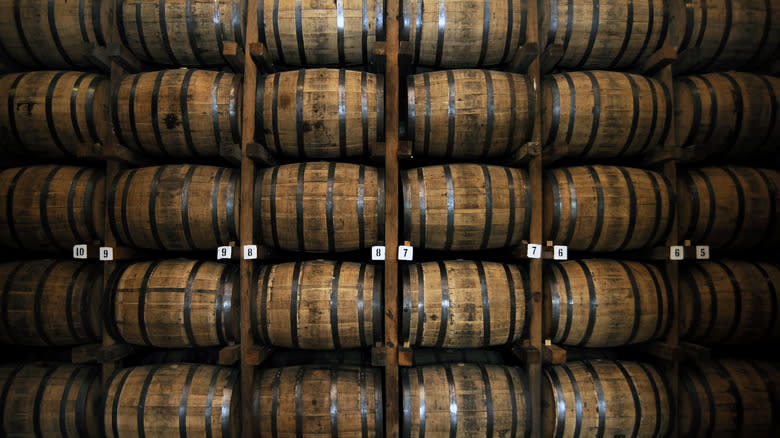
We've talked a little about how this is a blended whisky -- but what does that mean and how is Buchanan's 18-year made? Blended whiskies are made by mixing a variety of different single malt and grain whiskies. The exact whiskies used for a blend are rarely officially disclosed so we can't be sure which scotches are selected for Buchanan's 18-year. While that's true, we do know that John Buchanan licensed the Dalwhinnie distillery in the Scottish Highlands, and this single malt whisky is used in all their blends.
While Dalwhinnie is used, we know the exact scotch chosen can't be their infamous 15-year bottle. That's because as an 18-year blend, every whisky that is used in the mix has to be at least 18 years old. Many wonder whether the age statement on blended whiskies is an average of the expressions used, or perhaps even that the blend has been matured in a cask for 18 years. In fact, the age statement refers to the youngest whisky in the blend.
The process of making Buchanan's 18-year isn't as simple as mixing the scotches and immediately bottling them. Instead, the blend is all mixed into a vat and then pumped into casks where all the flavors are allowed to marry together, usually for up to eight months. So, if you were hoping to create your own Buchanan blend at home, you're out of luck.
What Does Buchanan's 18-Year Taste Like?
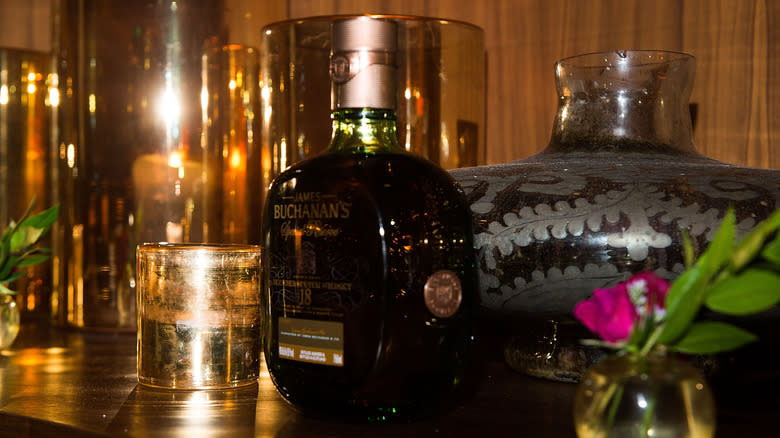
This leads us to the all-important question: what does Buchanan's 18-year taste like? With it using whiskies that have been matured for at least 18 years, you can expect a wide array of flavors.
The smell of the scotch is delightful and the first thing you note is its fruity profile, which some describe as sweet red apples, and others like a crisp orange. Along with the citrus notes are traces of vanilla, a little peat smoke, and chocolate. Moving to the palate there is a silky, almost oily, flow into the mouth before you're hit with a strong caramel toffee taste, with chocolate and vanilla also coming through. It all adds up to a rich whisky that many love.
Some believe there should be a little more complexity for an 18-year-old whisky and for others, the finish can fall a little short of expectations. It's fair to say that Buchanan's 18-year gets mixed reviews with some falling in love with its creamy texture with others wishing to get a little more value for their money. Whether or not you'll love this whisky can depend on whether you like your whiskies to have a creamy mouthfeel or not. If you do, there is a good chance you'll love Buchanan's 18-year.
Buchanan's 18-Year Vs. Buchanan's 12-Year

In its current range of five whiskies, Buchanan's only has two age-statement expressions, which are its 12 and 18-year. It's important to look at how these two whiskies compare and what you can expect from the six extra years of maturation. As you can probably guess, the 12-year expression is a slightly milder version on both the nose and palate. The flavor is nice and light which will be enjoyed by most drinkers, even those who confess to not being huge whisky drinkers. While it lacks complexity, it's enjoyed for its sweet and fruity flavor that sits on a backdrop of mild peat.
The finish is quite mild but also pleasant. It's a good whisky, but it doesn't have quite the depth of flavor or prolonged finish of the 18-year version. With its lower price point, we would say this is a brilliant beginner whisky for anyone looking to graduate from lower-self scotches into something a little more developed and mature. For those looking for a brighter, smoother scotch with a wide variety of fruits on the palate, the Buchanan's Master is a great alternative. Another impressive blend is their Red Seal. This is perfect for those who wish for a more peated palate due to its Islay influence, but it still has those characteristic fruity tastes of apples and mandarin that you expect from Buchanan's whisky.
Buchanan's 18-Year Vs. Chivas Regal 18-Year
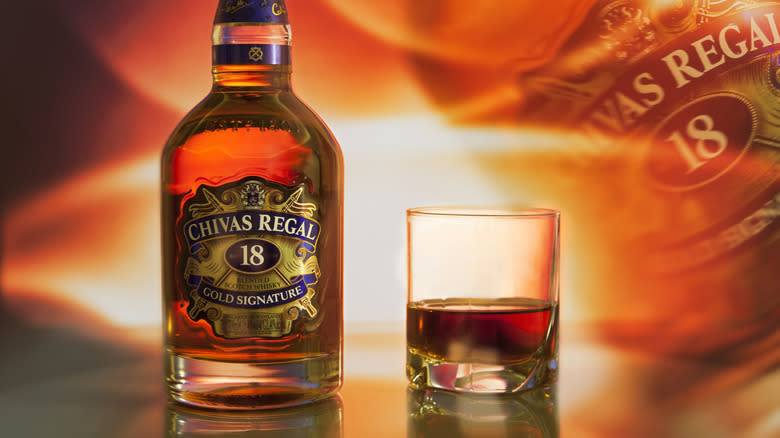
Those looking for a mature blended scotch have plenty of options. However, the closest rival to Buchanan's 18-year is most likely the Chivas Regal expression of the same age. This comes in at a similar price point but is one that often receives more favorable reviews. That is partly due to it being exceptionally smooth and while everyone has different preferences, it would be hard to find many who actively dislike Chivas Regal 18-year.
It's surprisingly sweet for a scotch whisky but there is also a touch of peat smoke to keep it grounded. Beyond that, it's loved for its dark chocolate palate which is the major influence on the whisky but is wonderfully supported by floral notes and a mild zest. The finish is also highly satisfying and leaves you wanting more.
Both these blends share a close connection to royalty, specifically Queen Victoria. While we mentioned how Buchanan's were given a Royal Warrant towards the end of her reign in 1898, Chivas Regal had already received their warrant 55 years earlier, just six years after she had taken her throne. So which one is better? It's hard to say -- but if you're like the United Kingdom's second longest-serving monarch, you'll be a fan of both.
Is Buchanan's 18-Year Expensive?
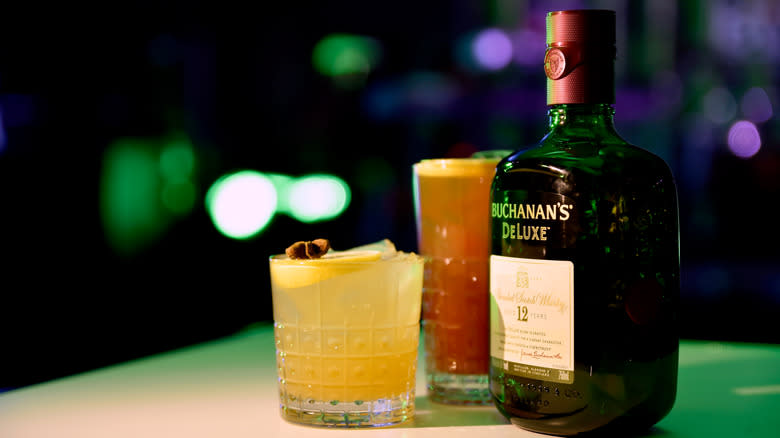
Buchanan's 18-year isn't a whisky that anyone will casually pick up from the store. Wine Searcher puts the average price of a bottle at a little under $80 -- the kind of price tag you'd expect from any 18-year-old scotch. Due to the cost, it's generally seen as a whisky perfect for those with a little extra money to spend, or anyone looking for something special as a treat or memorable gift.
With that cost, it's not one of the best bottles of scotch for beginners. That said, its perfectly rounded taste means Buchanan's would be enjoyed by casual whisky drinkers and dedicated whisky enthusiasts alike. While not a cheap whisky, it's priced at a similar level to other blended whiskies of the same age, such as the Chivas Regal 18-year, so it can be seen as decent value for money.
However, if an $80 bottle of whisky is a little out of reach for you at the moment, there are plenty of other great options. If you want to sample the delights that Buchanan's has on offer, the 12-year De Luxe bottle we mentioned is usually available for less than half the cost of its more mature 18-year-old sibling. Buchanan's Master is also at a similar price point for those looking for a fruity blend with elements of orange and toffee.
Blended Vs. Single Malt Whiskies
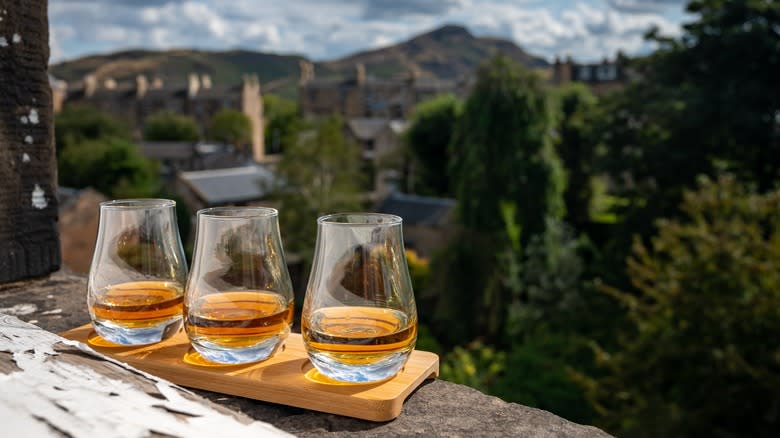
Logic would dictate that blended whiskies would be seen as superior to single malt whiskies. After all, they have been combined to take the best parts of several whiskies to make a perfect mix. However, the reality is much more complicated than that. Their basic difference is that single malt whiskies are made at just one malt distillery whereas blended scotches can be a mix of whiskies from both malt and grain distilleries. In the last half a century, there has been a huge increase in the popularity of single malt scotch whiskies, and they are often seen as the more premium drinks.
This is partly due to a higher quality of barley being used for single malts and the grain whisky used in blends being more economical to make. This is why the vast majority of whisky sales are blended whiskies, as they are cheaper to produce and don't need to be matured for as long. Does this mean that single-malt whiskies are better? Not necessarily, as it can come down to personal preference. While many blended whiskies are made to be sold cheaply and at high volumes, others such as the Buchanan 18-year only use whiskies that have been matured for a long time to ensure they are of the highest quality. If you're new to the world of whisky then sampling all the different types is the way to go, as you'll soon be able to discover your own tastes.
How To Drink Buchanan's 18-Year
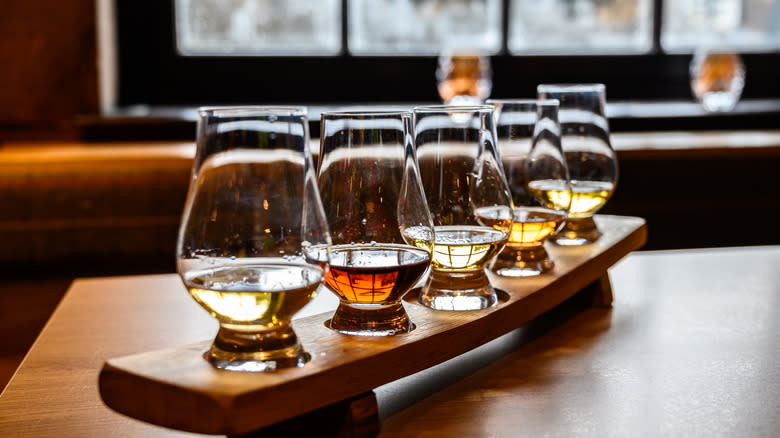
Buchanan's 18-year is both an expensive and incredibly mature whisky, therefore it's generally recommended that you drink it neat. Premium blended whisky, including Buchanan's 18-year, is often created to be mellow and easy on the palate. This means any whisky lover will enjoy this scotch without adding anything to it. It's best enjoyed at room temperature and without any ice, but it's fine to add some if you prefer.
Of course, if you buy a bottle of Buchanan's 18-year then you're free to drink it however you like. There are many amazing whisky cocktails out there and the reality is the better the whisky used, the better your cocktail will taste. While that may be true, the taste difference between a $30 bottle and a $80 bottle is going to be barely noticeable when mixed with other drinks. Unless you have very expensive tastes, it's best to have Buchanan's 18-year for when you want to savor a beautiful whisky on its own.
While any glass can be used for whisky, when sampling a new scotch it's best to first try it in a classic Glencairn glass. These glasses focus the aromas to your nose and let you admire the body and color of the whisky, before enjoying its taste. While not everyone enjoys drinking out of a tapered glass, it's always a good idea to at least have one drink of a new scotch from a specialized glass before moving on to a tumbler.
Read the original article on Tasting Table.


